LG G2 and MSM8974 Snapdragon 800 - Mini Review
by Brian Klug on September 7, 2013 1:11 AM EST- Posted in
- Smartphones
- LG
- Mobile
- LG G2
- Android 4.2
- MSM8974
- Snapdragon 800
Display
We've been very pleased with what comes out of LG Display as of late, and the G2 doesn't disappoint. It's a 5.2-inch diagonal LCD with 1920x1080 resolution for 423 PPI density. Of course, it isn't just resolution that matters, but of course calibration, viewing angles, and other quality measures. What's interesting about the G2 is that it has two discrete touchscreen matrices which get routed to the top and bottom and out two different connectors. LG says this allows it to get the bezels on the G2 down to 2.65mm. I find a lot of what constrains device size lately is really width rather than height, and maximizing the amount of the front area used by display helps devices include bigger displays without getting too large.
![]()

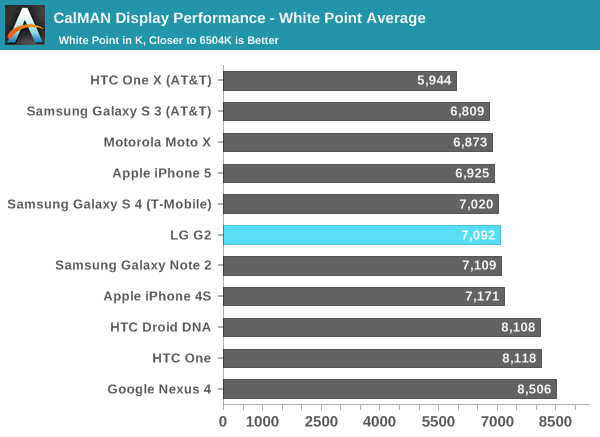
Saturations:
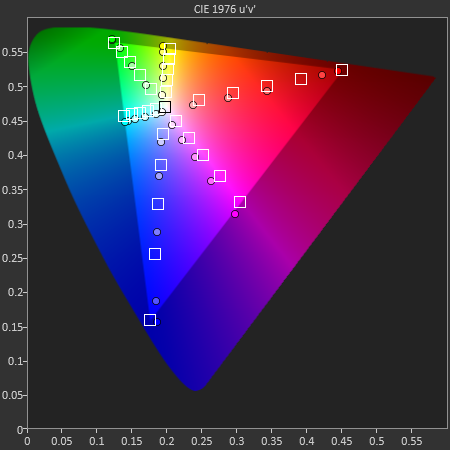

Grayscale Sweep:

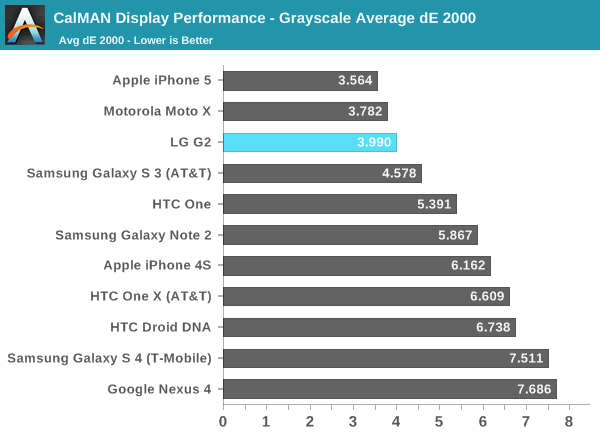
GMB Color Checker:
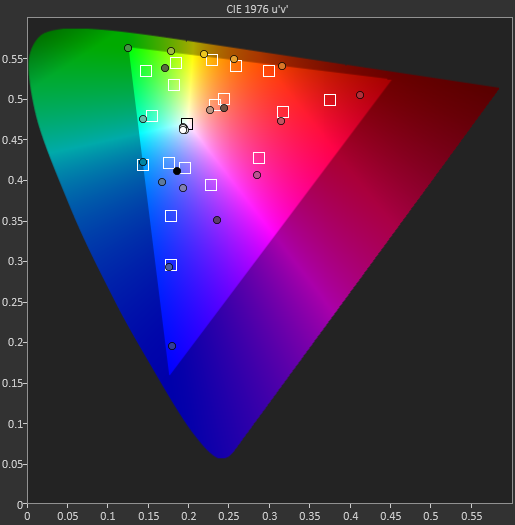
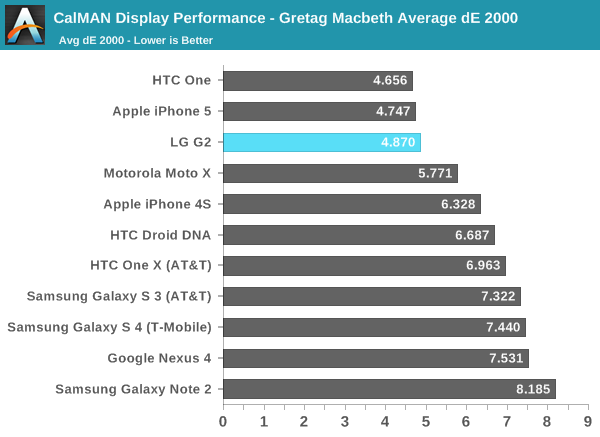
I measured the G2 display and was very impressed with how things turned out. The panel goes nice and bright (around 400 nits) but not quite as high as the 460 from the 720p LG Display panel from the Nexus 4. On the bright side however it comes in close to 6504K in temperature, and has some of the lowest DeltaE 2000 scores we've seen, with the iPhone 5, HTC One, and G2 clustering together in the GMB color checker test and saturations sweep.
















120 Comments
View All Comments
neoraiden - Sunday, September 8, 2013 - link
I was considering the qx100 but the price is out of my range as I don't take enough photographs to spend that much, am considering the qx10 though at that price point I wonder if a canon 240hs would suffice.Arnulf - Saturday, September 7, 2013 - link
"Gone are the days of 1.4V to hit near-2GHz frequencies it seems, instead 8974 will hit 2.3 GHz at around 1V"About fuggin time - my 2006 vintage 65 nm Core2 runs at 2.13 GHz at less than 1.1V. I was under the impression that smaller lithography process allows for lower voltages so they should have been well under 0.9V for 2 GHz by now.
Drumsticks - Saturday, September 7, 2013 - link
You are comparing two different companies' completely different CPUs, ARM vs x86 too. My 4670k will do 4ghz stable on a volt. The nature of smartphone SoCs vs full CPUs is very differentmadmilk - Saturday, September 7, 2013 - link
Your Core 2 also consumes 10 watts idling, despite the use of high-k dielectrics that TSMC only recently started using. HP trades off leakage for high clock speeds and low voltages.FwFred - Saturday, September 7, 2013 - link
You are comparing a platform with 3 discrete chips instead of one, and way more high voltage IO interfaces. Try a modern x86 SoC: Haswell ULT, Bay Trail, or Clover trail for a more fair comparison for idle power.His point was top clock speed vs. voltage. A completely different topic.
Krysto - Sunday, September 8, 2013 - link
From what I've read, it's becoming very hard to use the same litography process at smaller nodes, and they need to move to a new litography technology (ultraviolet litography, I think), but that's years away from being ready, too, and might not be until 14nm or even 10nm.unipidity - Saturday, September 7, 2013 - link
I would just like to comment that articles like this are one of the reasons Anandtech will continue to get my traffic long into the future. Brian's "mini-review" is head and shoulders above any "full" review I come across on most tech review sites. Anandtech is never ever first to print, at least on phones, but when it comes to properly informing my purchasing decisions, nothing comes else comes close. Keep up the good work.Impulses - Saturday, September 7, 2013 - link
+1000UltraWide - Saturday, September 7, 2013 - link
Why are the comparison devices different throughout the tests?This inconsistency makes it hard to compare the G2 to another device.
nerd1 - Saturday, September 7, 2013 - link
Funny fact is the domestic version of G2 supports both microSD and switchable battery (albeit slight smaller). Obviously US customers are too tamed to apple devices and they won't need such features.